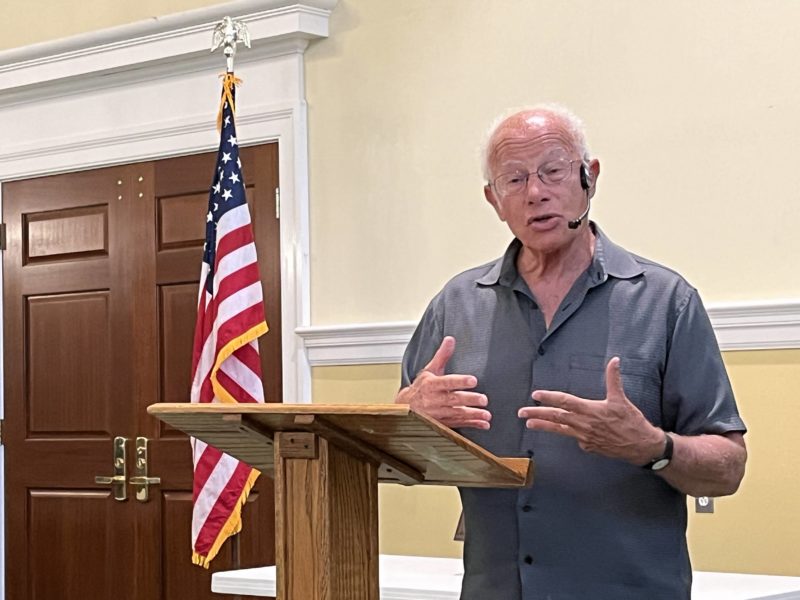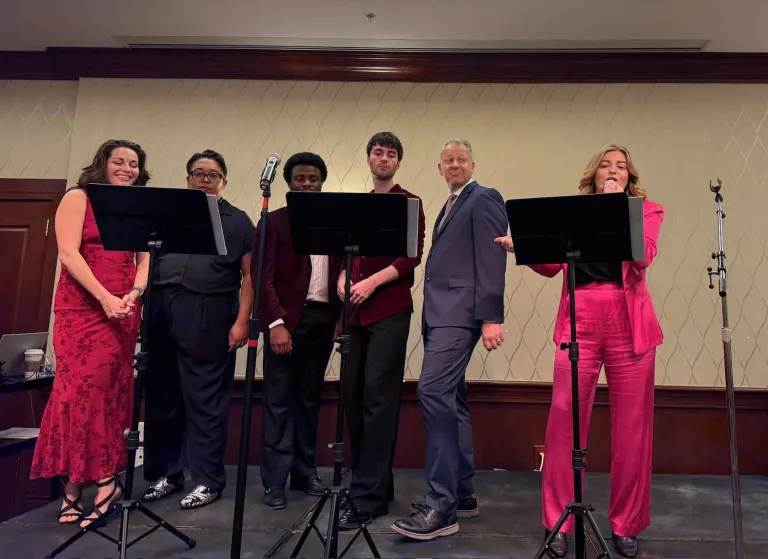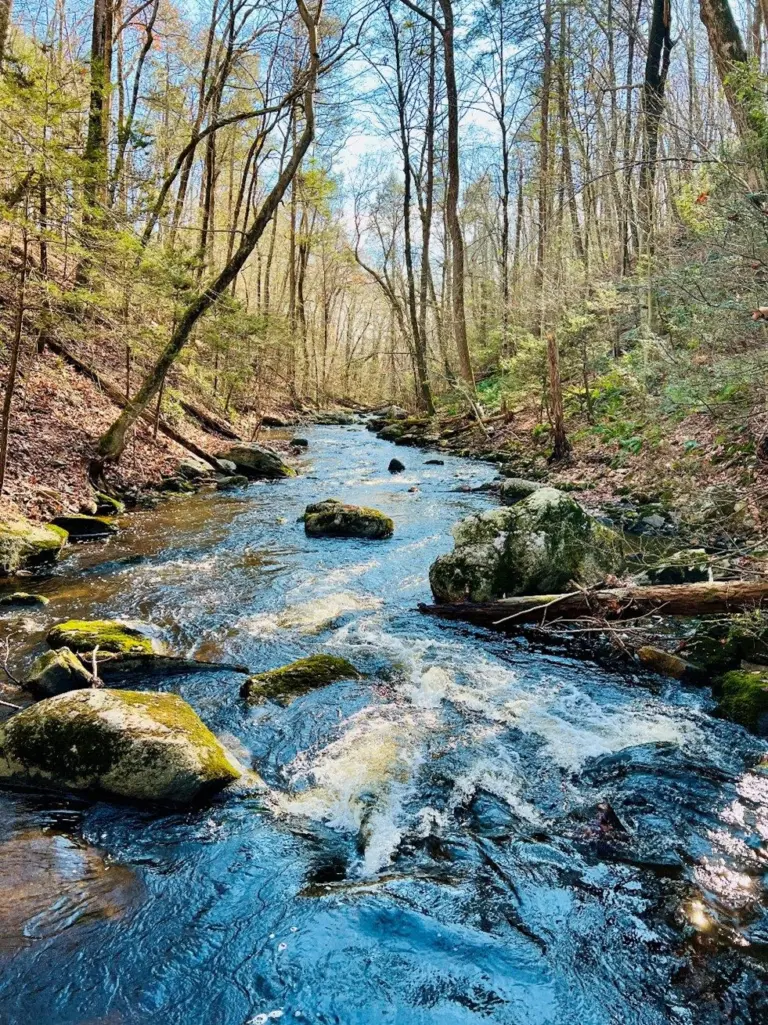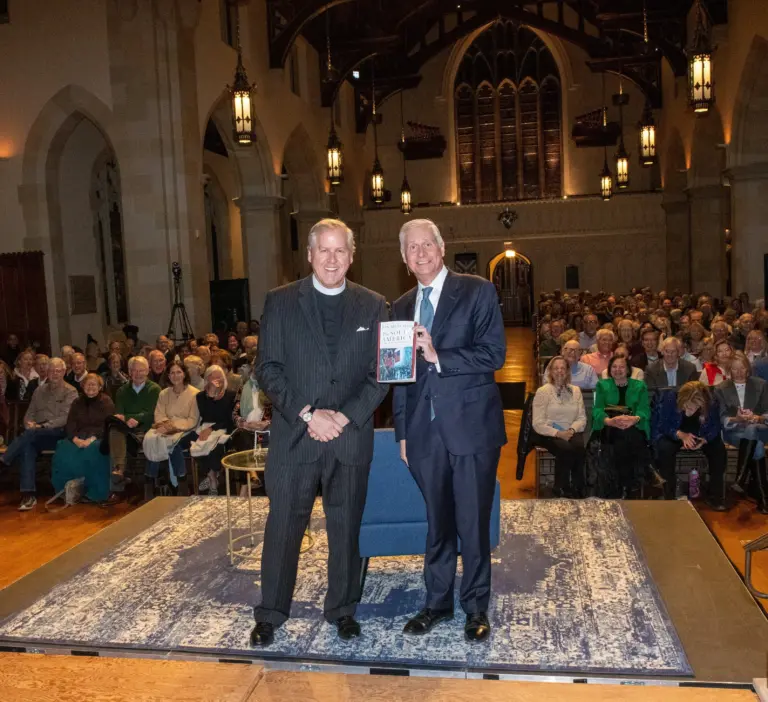
By David Michonski
At the July 10 meeting of the Retired Men’s Association Tim Brooks introduced Professor Foster Hirsch who spoke on “Hollywood and Movies of the Fifties: The Collapse of the Studio System, the Thrill of Cinerama, and the Invasion of the Ultimate Body Snatcher—Television”
Hirsch provided a fascinating look at Hollywood’s most turbulent decade, set against the boom of the post–World War II years, the Cold War, and the atomic age—with movies that reflected seismic shifts. Hollywood in the 1950s was a period when the film industry both set conventions and broke norms and traditions, from Cinerama, CinemaScope, and VistaVision to the epic film and lavish musical. It was a decade that saw the rise of the anti-hero; the smoldering, the hidden, and the unspoken; teenagers gone wild in the streets; the sacred and the profane; the revolution of Method Acting; the socially conscious; the implosion of the studios; the end of the production code; and the invasion of the ultimate body snatcher, “small screen” television. It was Eisenhower’s America—seemingly complacent and conformity-ridden as in Vincente Minnelli’s “Father of the Bride,” Walt Disney’s “Cinderella,” and “Brigadoon,” among others. It was also a darkening, resonant landscape, beset by conflict, discontent, and anxiety (“The Man Who Knew Too Much,” “The Asphalt Jungle,” “A Place in the Sun,” “Touch of Evil,” “It Came From Outer Space”), an America on the verge of cultural, political and sexual revolt (“East of Eden,” “From Here to Eternity,” “On the Waterfront,” “Sweet Smell of Success,” “The Wild One,” “A Streetcar Named Desire,” “Jailhouse Rock”).
Foster Hirsch is the author of 16 books on theatre and film. A native of California, Hirsch received his B.A. from Stanford University and holds M.F.A., M.A. and Ph.D. degrees from Columbia University. Hirsch joined the English department of Brooklyn College in 1967, and in 1973 became one of the first professors to join the school’s newly established film department.
During his talk Hirsch explained that he was an intense movie goer and subconsciously he was gathering the data for his book for 70 years. He viewed himself as the last of the historians who lived through the period of the 50’s and who had a front row seat for the movies of that time. He started one chapter of his book with the phrase “The past is a foreign country” and said as we grow older we idealize it. Hirsch admitted being guilty of nostalgia and idealizing the past and in his book he wanted to challenge perceptions of the 50’s. He defended the culture and movies of the 1950s. He called it a “vital period,” more anxiety driven than we remember and even dark at times.
He noted that during WWII people went to movies. When TV came into people’s homes, attendance dropped. With TV the studios had to figure out ways to get people back into movie houses. One way was to add wide-screen film-making to accent the importance of theaters. Vista Vision and Technovision are two examples of this trend. In addition, theaters tried 3-D movies. Those did not last long because people did not like to wear the glasses. They started in 1952 but ended in 1954, with over 50 3-D movies.
Finally, the studios had to find other ways to appeal to people. They looked to great novels and books such as “Moby Dick” or novels by Hemingway and Dostoevsky such as “War and Peace.” They also went for a new style called “exploitation,” such as the “The Attack of the 50 Foot Woman,” targeting young people. In addition, there were a number of films focused on race. Some reflected progressive views on race. There were also revisionist westerns showing how Native Americans were treated.
Hirsh concluded that there were more great movies in the 1950s than in any other decade. Following are seven movies of the 1950s that he highly recommends, along with brief explanations of why he considered each to be exceptional.
1. “On the Waterfront” (1954) – Hirsch called this “the single finest performance in American movies,” referring to Marlon Brando’s acting. He also considered it “the greatest American film of the fifties.”
2. “Sudden Fear” (1952) – Hirsch described this as “one of the best films ever made” and urged the audience to “Go home and see it today.”
3. “Imitation of Life” (1959) – Hirsch referred to this as “one of the greatest films ever made in America” and praised its subversive portrayal of race relations.
4. “The Searchers” (1956) – While Hirsch called this a “difficult film,” he also deemed it a “masterpiece” for its treatment of racial themes in the Western genre.
5. “Ben-Hur” (1959) – Hirsch called this “the greatest epic I’ve ever seen in the movies,” praising it as an exemplar of the epic genre.
6. “The Ten Commandments” (1956) – Despite criticizing its director Cecil B. DeMille, Hirsch insisted this is “a terrific piece of filmmaking” and “worth your time.”
7. “Rebel Without a Cause” (1955) – He praised this film for James Dean’s enduring portrayal of teenage angst, noting that even modern students can still relate to it.
The talk can be viewed by going to the RMA website at https://greenwichrma.org, and clicking on “Speakers.”
On July 24 Phillip James Dodd will speak on the subject of Beaux-Arts architecture in New York City. Dodd has lectured extensively throughout the United States on classical, vernacular, and Beaux-Arts architecture, and has appeared on C-Span and its American History TV lecture series.
Born and raised in the United Kingdom, Dodd is an alumnus of the Prince of Wales’ Institute of Architecture in London. He moved to America more than twenty years ago, and after training with some of the most recognized classical architecture firms in the country founded his design firm Phillip James Dodd: Bespoke Residential Design LLC in 2015. His designs can be found in New York, Greenwich, The Hudson Valley, Palm Beach, and as far as away as Bangalore, India. He is the recipient of the prestigious Elizabeth L. and John H. Schuler Architectural Award, as well as an Addison Mizner Award for Excellence in Classical and Traditional Architectural Design.
Dodd has a master’s in architecture from the University of Notre Dame and an undergraduate degree in architecture from the Manchester School of Architecture. He is a Fellow Emeritus of The Institute of Classical Architecture & Art, and serves as a commissioner on The Town of Greenwich Historic District Commission. In 2013 he was elected by his peers as an Honorary Fellow of the INTBAU College of Traditional Practitioners, an international body for practitioners in traditional architecture, under the auspices of the former Prince of Wales (now King Charles III).
Dodd is the author of several best-selling books – “The Art of Classical Details: Theory, Design & Craftsmanship” (2013); “An Ideal Collaboration” (2015); “The Classical American House” (2017); and “An American Renaissance: Beaux-Arts Architecture on New York City” (2021) – which includes a foreword by Julian Fellowes (the acclaimed creator of “Downton Abbey” and the HBO series “The Gilded Age”). He has been featured in “Architectural Digest,” The Associated Press, “The New Criterion” and “World of Interiors.”
To stream the presentation by Phillip Dodd at 11 AM on Wednesday, July 24, click on https://bit.ly/30IBj21. This presentation will also be available on local public access TV channels, Verizon FIOS channel 24 and Optimum (Cablevision) channel 79.
Note: The views expressed in these presentations are those of the speakers. They are not intended to represent the views of the RMA or its members.
RMA speaker presentations are presented as a community service at no cost to in-person or Zoom attendees, regardless of gender. Any member of the public who would like to receive a weekly email announcement of future speakers should send a request to members@greenwichrma.org. The RMA urges all eligible individuals to consider becoming a member of our great organization, and thereby enjoy all the available fellowship, volunteer, and community service opportunities which the RMA offers to its members. For further information, go to https://greenwichrma.org/, or contact members@greenwichrma.org




